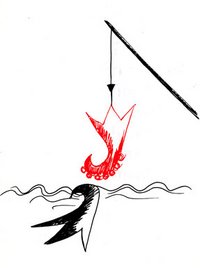The university prior to the reforms in the 1990s
The background of the reforms in the 1900s was a long-standing, gradual crisis and the acute financial crunch facing the university’s main funder, the canton of Basel-City. This crisis, coming on the heels of strong growth during the 1960s and 1970s, had repercussions for university finances as well its institutional structure.
Facing tight financial resources, the canton of Basel-City found itself increasingly unable to support the university on its own. Since 1976, the canton of Basel-Countryside has made substantial financial contributions to the university’s budget, but the level of support did not correspond to the share of students from the canton, whose numbers surpassed those from the city in the early 1980s. Institutionally and organizationally, the university remained an administrative department of the canton of Basel-City and, in this capacity, was subject to a complicated system of state supervision and control that ranged from the Department of Education to the Board of Education, the government Oversight Committee for the university (the Kuratel), and a government-appointed Coordination Commission.
The situation within the university itself
The position of rector – similar to a university president in North American universities – was purely representative, even if the rectors, by virtue of their prestige and social relations, were able to exert an influence beyond this limited scope. Beginning in the 1980s, the designated, acting, and emeritus rector began to work more closely together as a triumvirate, which strengthened the importance of the office. However, the acting rector’s deputy remained the only full-time employee within the Rectorate, with task that included managing the university’s small administrative staff of just over a dozen people. The university was divided into five faculties and numerous institutes and departments, each of which maintained contact with “higher agencies” to represent their material interests. Collaborations across faculties were rare, while the typical institutional configuration comprised small, isolated units. There was no body for matters affecting the entire university or concerns that might bring together its different parts, except for the Senate, which represented all university “estates,” including students with a share of 20 percent.
The situation of clinical medicine was an additional complicating factor, as the department both provided public health services and contributed to teaching and research. As such, it was under the authority of the Department of Health. University construction, by contrast, was under the authority of the Department of Construction. There was no transparent university accounting system clearly showing where expenses were being incurred, and at what levels. And the fact that numerous services were being provided by the canton of Basel-City without any accounting or tracking meant that no one knew how much the university really cost to run. Speaking about existing university structures, Clemens Stöckli, a member of the governing council of Basel-Countryside, declared in no uncertain terms: “If Basel-Countryside is to join with Basel-City in sponsoring the university, an entirely new structure must be created. The current structure is a kind of mosaic and works in its own way, but I don’t want to be a part of it.”
General stagnation
In the 1908s, a trend toward stagnation was unmistakable. The administration of Basel-City largely proceeded by handling matters as had “always” been done. Within the university itself, there was a certain skepticism about major reform initiatives, especially after a 1980 attempt to reform the University Act had failed to overcome political resistance after a decade of effort in the Grand Council. The constant financial pressure weighing on the university in successive rounds of austerity was making itself felt, gradually threatening the institution’s good reputation: attempts to appoint faculty were often prolonged and ended without success; conditions for teaching and research deteriorated; and necessary expansions and innovations were delayed year after year.



